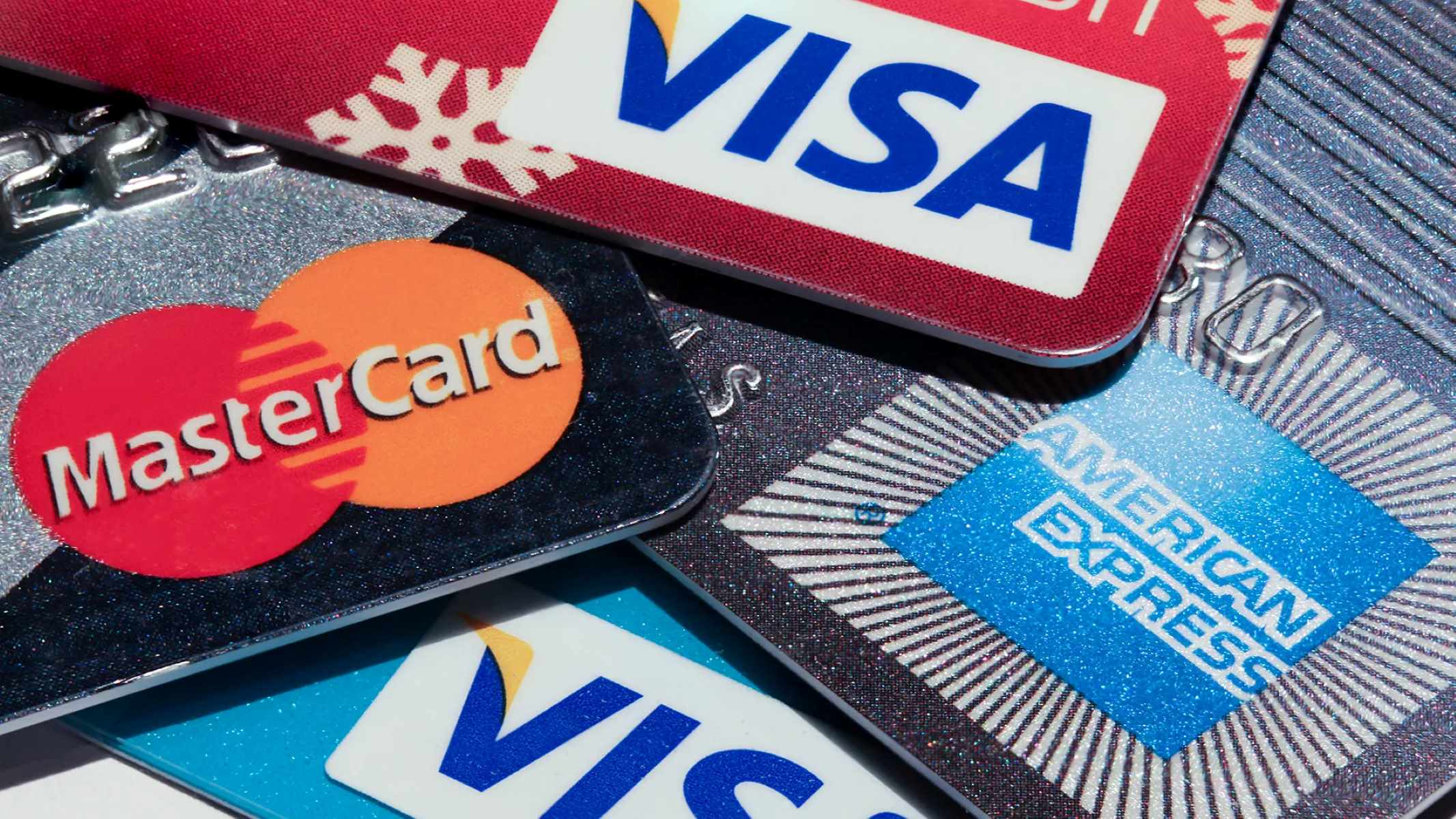Home>Finance>What Techniques Do Credit Card Companies Use To Market Their Credit


Finance
What Techniques Do Credit Card Companies Use To Market Their Credit
Published: October 26, 2023
Discover the strategic marketing techniques used by credit card companies in the finance industry to attract and engage customers with their credit offerings.
(Many of the links in this article redirect to a specific reviewed product. Your purchase of these products through affiliate links helps to generate commission for LiveWell, at no extra cost. Learn more)
Table of Contents
Introduction
In the world of finance, credit cards play a pivotal role in our daily lives. From making purchases to building credit history, credit cards offer convenience and flexibility. Behind the scenes, credit card companies employ various marketing techniques to attract and retain customers. Understanding these techniques can shed light on how they capture our attention and incentivize us to choose their products.
Marketing credit cards is a highly competitive industry, with companies vying for a share of the market. They employ creative strategies to target potential customers, offering enticing rewards and benefits that cater to specific needs and lifestyles. These strategies not only aim to acquire new customers but also to foster long-term relationships by keeping existing cardholders satisfied.
In this article, we will explore the techniques that credit card companies use to market their products. From targeted advertising to personalized offers, we will delve into the various strategies employed in the credit card industry to attract and engage consumers. By understanding these techniques, you will gain insights into the tactics used to promote credit card products and make informed decisions when choosing the right card for your needs.
Targeted Advertising
One of the most powerful techniques credit card companies use to market their products is targeted advertising. They invest significant resources in analyzing consumer data and behavior to create tailored advertisements that resonate with specific demographics and customer segments. By leveraging data analytics, credit card companies can identify potential customers who are more likely to be interested in their products.
Targeted advertising takes various forms, from online ads displayed on websites and social media platforms to direct mail campaigns. Through advanced algorithms, credit card companies can deliver ads to individuals who fit specific criteria, such as age, income level, location, and spending habits. For example, if a credit card company wants to target frequent travelers, they may showcase ads featuring travel rewards and benefits.
Additionally, credit card companies partner with third-party data providers to enhance their targeting capabilities. They gain access to additional consumer data, such as shopping preferences and lifestyle choices, which helps them refine their targeting and create more relevant offers. This approach ensures that the right ads are shown to the right people at the right time, increasing the chances of capturing their attention and converting them into customers.
An important aspect of targeted advertising is remarketing. When an individual shows interest in a credit card product by visiting the company’s website or clicking on an ad, the company can use cookies and tracking pixels to serve them personalized ads across different online platforms. This strategy serves as a reminder and encourages the individual to take action, such as submitting a credit card application.
Overall, targeted advertising allows credit card companies to maximize their marketing efforts by focusing on the individuals most likely to respond positively to their offers. By tailoring their advertisements to specific customer segments, they can effectively communicate the benefits of their credit cards and increase the likelihood of attracting and converting potential customers.
Rewards and Benefits
One of the key techniques credit card companies use to market their products is by offering appealing rewards and benefits. These incentives are designed to entice potential customers and differentiate their credit cards from competitors. By providing additional value beyond the basic functionality of a credit card, companies aim to attract new customers and encourage existing cardholders to continue using their products.
Rewards programs are a common feature of credit cards, and they come in various forms. Cashback rewards offer a percentage of the amount spent on the credit card as a cash rebate, providing instant gratification to customers. Travel rewards allow cardholders to earn points or miles for their purchases, which can be redeemed for flights, hotel stays, or other travel-related expenses. Other rewards programs may focus on specific categories, such as dining or grocery shopping, offering increased rewards for spending in those areas.
Additionally, credit card companies often offer sign-up bonuses to new customers. These bonuses come in the form of extra rewards, statement credits, or even free flights or hotel stays. Sign-up bonuses are designed to incentivize potential customers to choose a particular credit card and give them an immediate reward for their decision.
Beyond rewards, credit card companies also provide a range of benefits that can enhance the cardholder’s experience and provide added value. These benefits may include airport lounge access, travel insurance, purchase protection, extended warranties, and concierge services. By offering such perks, credit card companies differentiate their products and cater to the specific needs and preferences of their target audiences.
Moreover, credit card companies often collaborate with merchants and establish partnerships to offer exclusive discounts and deals to their cardholders. These partnerships encourage usage of the credit card at participating merchants and provide additional savings or unique experiences.
By offering appealing rewards and benefits, credit card companies aim to create a sense of value for their customers. These incentives not only attract new customers but also encourage existing cardholders to continue using their credit cards, thus fostering loyalty. Ultimately, rewards and benefits play a crucial role in the marketing strategies of credit card companies, offering an enticing proposition that goes beyond the convenience of making purchases on credit.
Low Introductory Rates
Another effective technique credit card companies use to market their products is by offering low introductory interest rates. These rates, also known as promotional or teaser rates, are typically lower than the ongoing interest rates associated with the credit card. They serve as an attractive proposition for potential customers, especially those looking to transfer balances from higher interest rate credit cards or finance large purchases.
Low introductory rates allow individuals to save money on interest charges during the introductory period, which typically lasts for a specified number of months. This can be especially appealing for individuals with existing credit card debt, as they can take advantage of the lower rate to pay off their balance more quickly and save on interest expenses.
Furthermore, credit card companies may extend the low introductory rate to promotional balance transfers. This allows individuals to transfer balances from other credit cards and enjoy the lower rate for a certain period, often with a nominal balance transfer fee. This technique aims to entice individuals with balances on high-interest credit cards to switch to their credit card, benefiting from the lower rate and potentially saving money on interest charges.
It is important for individuals considering a credit card with a low introductory rate to be aware of the terms and conditions associated with these offers. After the introductory period ends, the interest rate typically reverts to the card’s standard rate, which might be significantly higher. Therefore, it is crucial to read the fine print and understand the long-term implications before opting for a credit card solely based on its low introductory rate.
Low introductory rates are a powerful marketing tool for credit card companies to attract new customers and encourage balance transfers. They provide an incentive for individuals to choose their credit card over competitors and can be an effective way to save on interest charges during the promotional period.
Balance Transfer Promotions
Balance transfer promotions are another commonly used technique by credit card companies to market their products. These promotions allow individuals to transfer the balances from their existing credit cards to a new credit card, typically with favorable terms and incentives. The primary goal of balance transfer promotions is to entice customers to switch their credit card balances to the company’s card, often offering lower interest rates or even zero percent interest for a limited period.
By offering attractive balance transfer promotions, credit card companies aim to appeal to individuals carrying debt on higher interest rate credit cards. The allure of lower interest rates or interest-free periods during the promotional period can be highly appealing, as it allows individuals to pay off their existing debt more efficiently and potentially save on interest charges.
Balance transfer promotions typically come with certain terms and conditions. For example, there may be a fee associated with the balance transfer, usually a percentage of the transferred amount. It is important for individuals to compare the fees charged by different credit card companies to ensure they are getting the best deal. Additionally, the promotional period for the lower interest rate or zero percent interest is typically limited, so it is essential to understand when the regular interest rates will apply.
Furthermore, some credit card companies may offer additional incentives as part of their balance transfer promotions. These incentives can include rewards, cashback, or even statement credits for a certain amount of spending within a specified time frame. These extra perks can further entice individuals to choose their credit card for their balance transfers.
Balance transfer promotions can be an effective strategy for credit card companies to acquire new customers and increase their market share. These promotions give individuals an incentive to switch their credit card balances, providing a potential cost-saving opportunity for their debt repayment journey.
However, it is crucial for individuals to evaluate the long-term implications of balance transfer promotions. Once the promotional period ends, the interest rates may revert to the card’s standard rate, which may be higher than the individual’s original credit card. Careful consideration and planning are necessary to ensure that transferring balances to a new credit card will result in overall financial benefits.
Exclusive Partnerships
Exclusive partnerships are a powerful marketing technique employed by credit card companies to attract customers and differentiate their products from competitors. These partnerships involve collaborations with well-known brands, companies, or organizations to offer exclusive benefits and rewards to cardholders.
One common type of exclusive partnership is co-branded credit cards. Credit card companies team up with popular brands or retailers to create a credit card that bears both their logos. These co-branded cards often come with special perks, such as discounts, rewards, or access to exclusive events or experiences. For example, a co-branded credit card with an airline may offer bonus miles for every dollar spent on the card, priority boarding, or free checked bags.
Exclusive partnerships also extend to other industries such as hospitality, entertainment, and sports. Credit card companies may collaborate with luxury hotel chains to offer complimentary room upgrades, late checkout, or access to exclusive amenities for their cardholders. They may also partner with entertainment venues or sports teams to provide exclusive ticket offers or VIP experiences.
These partnerships not only provide value-added benefits to cardholders but also create brand loyalty. By aligning with popular and well-established brands, credit card companies position themselves as providers of unique and desirable experiences. They tap into the existing customer bases of their partners and attract new customers who are passionate about the partnered brand or industry.
Exclusive partnerships also generate cross-promotion opportunities. Credit card companies often leverage their partnerships to promote their credit cards to the brand’s existing customer base. This can involve targeted advertising, joint marketing campaigns, or even special offers for customers of the partnered brand who sign up for the credit card.
Moreover, the benefits of exclusive partnerships extend beyond rewards and discounts. They can also include access to special events, early ticket sales, or even exclusive products and services. These exclusive perks create a sense of prestige and exclusivity for cardholders, further enhancing the brand image and value proposition of the credit card.
Overall, exclusive partnerships are a powerful marketing technique used by credit card companies to enhance the appeal of their products. By collaborating with well-known brands and organizations, they provide unique benefits and experiences to cardholders, differentiate themselves from competitors, and foster loyalty among their customer base.
Co-branded Cards
Co-branded credit cards are a popular marketing strategy employed by credit card companies to attract customers and offer unique benefits and rewards. In a co-branded partnership, a credit card company collaborates with a well-known brand, retailer, or organization to create a credit card that is co-branded with both logos.
Co-branded cards are designed to cater to specific consumer interests and preferences. By partnering with a brand that resonates with a particular target audience, credit card companies can tap into the brand’s loyal customer base and attract new customers who have a strong affinity for the partner brand. For example, a credit card company may collaborate with a major airline to create a co-branded credit card that offers exclusive travel perks and rewards.
These co-branded credit cards often provide cardholders with various advantages. They may offer enhanced rewards programs that allow cardholders to earn more points or miles for every dollar spent on the partner’s products or services. Additionally, co-branded cards may offer exclusive discounts or promotional offers when shopping with the partner brand.
One of the key benefits of co-branded credit cards is the synergy between the credit card company and the partner brand. The partner brand gains access to the credit card company’s customer base, while the credit card company leverages the partner brand’s reputation and customer loyalty to attract new cardholders. This mutually beneficial partnership increases brand visibility and strengthens the value proposition for both the credit card and the partner brand.
Co-branded cards also provide a sense of exclusivity and affiliation with a well-known brand. Cardholders often feel a sense of pride and connection with the partner brand, as their credit card serves as a symbol of their loyalty and affinity. This can further drive customer engagement and loyalty, as cardholders enjoy the perks and rewards associated with their co-branded credit card.
Moreover, co-branded partnerships offer opportunities for cross-promotion and joint marketing initiatives. The credit card company and the partner brand can work together to promote the co-branded card to their respective customer bases. This can involve targeted marketing campaigns, special promotions, or even exclusive offers for customers who sign up for the co-branded credit card.
Co-branded credit cards provide a win-win situation for both the credit card company and the partner brand. The credit card company gains access to the partner brand’s loyal customer base and enhances its product offering, while the partner brand benefits from increased brand visibility and customer engagement. Ultimately, co-branded cards offer unique benefits and rewards that cater to specific consumer preferences, creating a mutually beneficial partnership between the credit card company and the partner brand.
Cross-selling and Up-selling
Cross-selling and up-selling are effective marketing techniques used by credit card companies to increase their revenue and enhance the value for their customers. These strategies involve promoting additional products or services to existing cardholders, either by encouraging them to upgrade their current credit card or by offering complementary financial products.
Cross-selling is the practice of offering existing credit card customers other financial products or services. For example, a credit card company may offer their cardholders personal loans, mortgages, or investment products. By leveraging their existing relationship with the cardholder, the credit card company can present these additional products as convenient and advantageous options to meet their financial needs.
Up-selling, on the other hand, involves encouraging cardholders to upgrade their current credit card to one with higher benefits, rewards, or features. For instance, a credit card company may offer their cardholders the opportunity to switch to a premium or elite-level card that provides enhanced rewards, increased credit limits, or exclusive benefits like concierge services and travel insurance.
Both cross-selling and up-selling strategies benefit credit card companies by increasing their share of the customer’s wallet and generating additional revenue. By offering complementary financial products, credit card companies can tap into their existing customer base and leverage the trust and loyalty already established. This not only increases customer retention but also allows credit card companies to expand their product offerings and diversify their revenue streams.
From the customer’s perspective, cross-selling and up-selling can provide added convenience and value. Cardholders may find it beneficial to have multiple financial products with a single provider, as it simplifies their financial management and potentially provides access to better rates or discounts. Upgrading to a higher-tier credit card can also unlock additional perks and rewards, enhancing the overall cardholder experience.
However, it is essential for cardholders to evaluate the additional products or upgraded credit card offers carefully. They should consider their specific financial needs, compare the terms and benefits of the offerings, and assess any associated fees or costs. It’s crucial to ensure that the additional products or upgraded credit card align with their financial goals and provide tangible value.
Overall, cross-selling and up-selling strategies are integral to the marketing efforts of credit card companies. By offering additional financial products or enticing cardholders to upgrade their existing credit cards, companies can deepen customer relationships, generate more revenue, and provide tailored solutions to meet the diverse needs of their customers.
Mobile Apps and Online Tools
In the digital age, credit card companies are leveraging technology to enhance the customer experience and engage with their cardholders. Mobile apps and online tools have become essential marketing tools for credit card companies, providing convenient access to account management, transaction tracking, and personalized financial tools.
Mobile apps offered by credit card companies allow cardholders to conveniently manage their accounts on the go. These apps provide features such as real-time transaction notifications, balance inquiries, payment reminders, and the ability to make payments directly from a smartphone. By offering user-friendly and secure mobile apps, credit card companies ensure that their customers have seamless access to their credit card information and can conveniently manage their finances from anywhere.
Furthermore, credit card companies use mobile apps to engage with cardholders through personalized offers and rewards. They can send targeted notifications about exclusive discounts, bonus rewards, or limited-time promotions, directly to the app users. This personalized communication helps to create a sense of value and encourages cardholders to use their credit cards for specific transactions or at specific merchants.
Online tools provided by credit card companies offer additional functionality for cardholders. These tools can include budgeting and spending analysis tools, credit monitoring services, or financial education resources. By providing these tools, credit card companies position themselves as partners in their cardholders’ financial well-being, offering useful resources to help them manage their money and make informed financial decisions.
Credit card companies may also integrate their mobile apps and online tools with third-party services. For example, cardholders may be able to link their credit cards to digital wallet platforms like Apple Pay, Google Pay, or Samsung Pay, allowing for quick and secure contactless payments. This integration enhances the convenience and versatility of the credit card for the cardholder.
Ultimately, mobile apps and online tools play a significant role in the marketing strategies of credit card companies. They offer cardholders a convenient and streamlined way to manage their credit card accounts, increase customer engagement through personalized offers and rewards, and provide additional financial tools and resources to enhance the overall customer experience.
Personalized Offers
Personalized offers are a highly effective marketing technique used by credit card companies to engage with their customers on an individual level. By tailoring offers and promotions to match the specific needs, preferences, and spending habits of cardholders, credit card companies can enhance customer satisfaction and drive increased card usage.
The use of data analytics and advanced algorithms allows credit card companies to analyze customer spending patterns, purchase history, and demographic information. This data-driven approach enables them to segment their customer base and create targeted offers that resonate with each segment. For example, a credit card company may offer bonus rewards in specific categories, such as dining or travel, to cardholders who frequently spend in those areas.
Personalized offers can take various forms, including increased rewards, special discounts, or exclusive access to events or experiences. For instance, a credit card company may offer a higher cashback percentage on select purchases or provide cardholders with exclusive access to presale concert tickets. By tailoring these offers to the specific interests and preferences of individual cardholders, credit card companies can create a sense of value and encourage increased card usage.
In addition to transactional offers, personalized offers can also include targeted spending incentives. For example, a credit card company may set goals for cardholders to spend a certain amount within a specified time frame to unlock additional rewards or benefits. These targeted spending challenges serve as a way to engage cardholders, create a sense of competition, and reward them for their loyalty and increased card usage.
Personalized offers are often delivered to cardholders through multiple channels, including email, mobile app notifications, and online account portals. The timing of these offers is carefully planned to coincide with the cardholder’s spending patterns or upcoming events. By delivering the right offer at the right time, credit card companies can capture the attention and interest of their customers, increasing the likelihood of acceptance and utilization.
Moreover, personalization goes beyond just offers. Credit card companies strive to provide personalized customer service experiences as well. This can include tailored recommendations for products or services based on a cardholder’s spending history or providing dedicated customer support for specific issues or inquiries.
Overall, personalized offers allow credit card companies to build stronger relationships with their customers by demonstrating an understanding of their individual needs and preferences. By delivering targeted offers and incentives, credit card companies can drive increased card usage, foster customer loyalty, and ultimately create a win-win situation for both the cardholder and the company.
Conclusion
The marketing techniques employed by credit card companies are diverse and strategic, designed to attract and retain customers in an increasingly competitive market. By utilizing targeted advertising, offering appealing rewards and benefits, providing low introductory rates, promoting balance transfer promotions, establishing exclusive partnerships, implementing cross-selling and up-selling strategies, leveraging mobile apps and online tools, and delivering personalized offers, credit card companies are able to engage with customers in meaningful ways.
Targeted advertising allows credit card companies to reach the right audience with the right message, maximizing the effectiveness of their marketing efforts. Rewards and benefits, such as cashback, travel perks, and exclusive discounts, entice customers and foster loyalty. Low introductory rates and balance transfer promotions offer financial incentives for individuals to choose a specific credit card or transfer balances from high-interest cards. Exclusive partnerships with well-known brands create unique experiences and additional value for cardholders.
Cross-selling and up-selling strategies allow credit card companies to expand their product offerings and deepen customer relationships. Mobile apps and online tools provide convenience and personalized financial management solutions. Lastly, personalized offers take advantage of data analytics to deliver targeted promotions and incentives tailored to individual cardholders’ spending habits and preferences.
Understanding these marketing techniques gives consumers the knowledge to make informed decisions about choosing the right credit card for their needs. It also highlights the importance of careful evaluation of offers, terms, and conditions to ensure they align with personal financial goals and benefits.
In conclusion, credit card companies employ a wide range of marketing techniques to attract customers, enhance customer satisfaction, and encourage card usage. By leveraging these strategies, credit card companies can successfully navigate the competitive landscape of the finance industry and provide valuable products and services to their customers.














